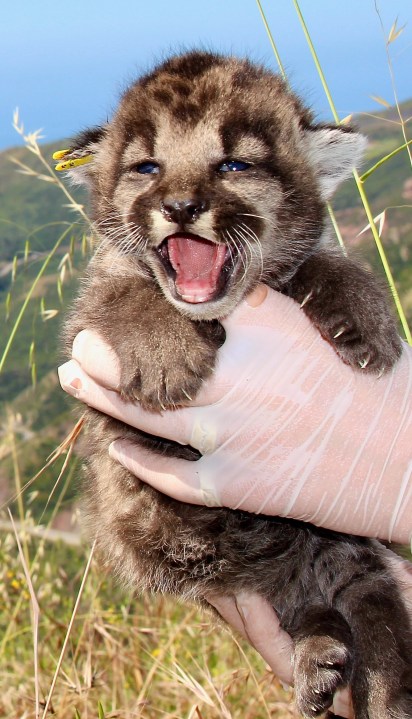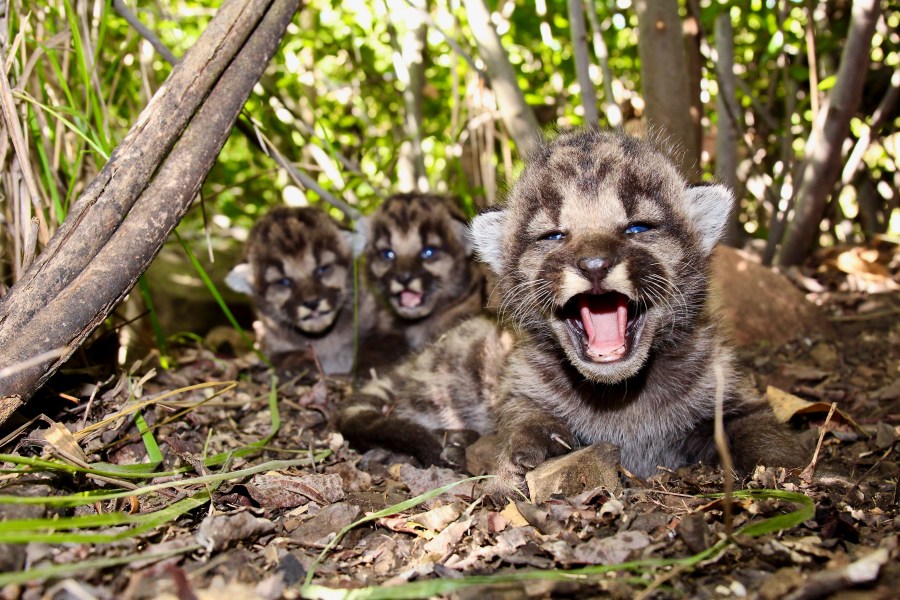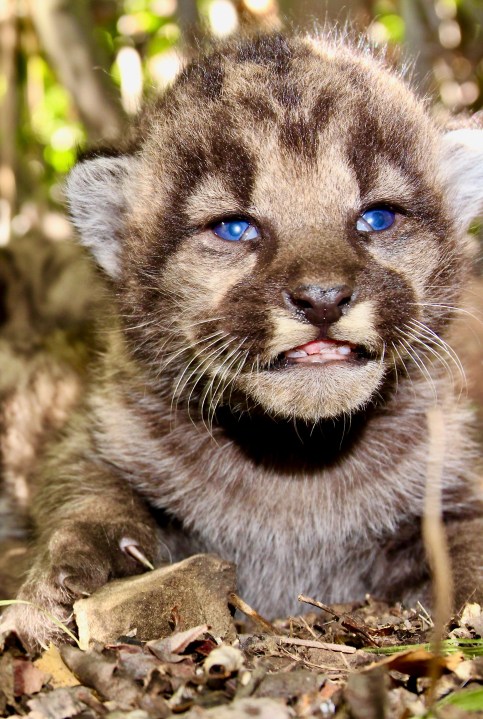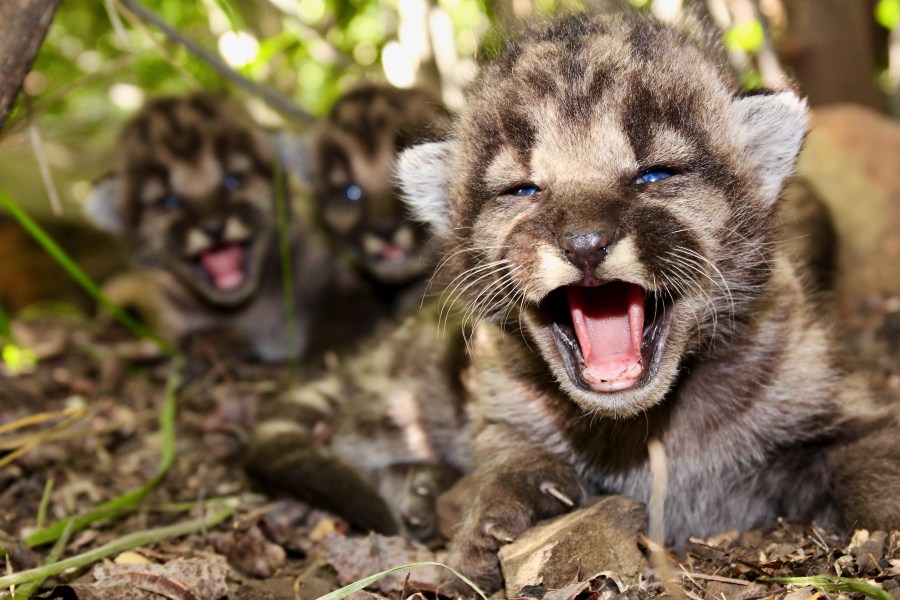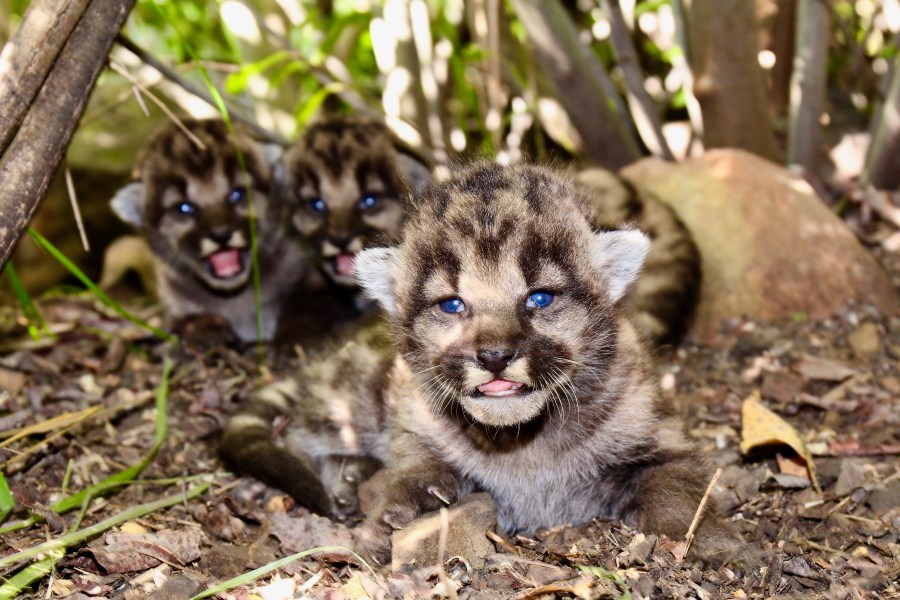Santa Monica Mountains resident P-54 has given birth to what scientists believe to be her first litter, three mountain lion kittens that may bring genetic diversity much needed in the area, officials announced Wednesday.
National Park Service researchers found the litter after noticing GPS locations indicating that three-year-old P-54 was either feeding at a kill site or that she has given birth about three months ago. More than four months ago, she was “located” with P-63, the only collared adult male in the mountains, for two days, according to park officials.
Soon, biologists found three healthy kittens: two males, which they called P-82 and P-83, and one female, P-84. The scientists tagged the trio, which were estimated to be 19 days old at the time. The researchers then took some samples for genetic testing before returning the kittens to their den, NPS said.
The litter is also likely the first fathered by P-63, which researchers captured and collared with his mother in February 2018 north of the 101 Freeway in the Simi Hills. He was about 15 months old at the time, according to the park service.
P-63 has since crossed the 101 three times and has stayed at the Santa Monica Mountains since December 2018, the park service said.
Park officials believe the last litter of kittens found at a den in 2018 were likely concieved through inbreeding, a serious problem faced by mountain lions isolated in the Santa Monica Mountains south of the 101, biologist Jeff Sikich said in a statement from the park service.
“We’re hoping this circumstance is totally different, but only genetic testing will tell us for sure,” Sikich said.
A bridge over the 101 Freeway would connect cougars in the Santa Monica Mountains to the larger and more genetically diverse population to the north. Officials said they’re still planning and raising funds to build the wildlife crossing in the Liberty Canyon area of Agoura Hills.
P-54’s offsprings are the 17th litter of mountain lion kittens marked at a den site since the National Park Service began studying the animals in 2002.
Correction: A previous version of this story in one instance used an incorrect numeral when referring to P-63. The post has been updated.
